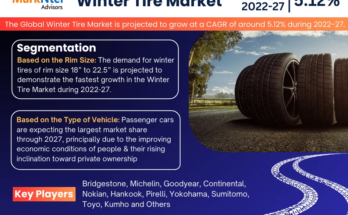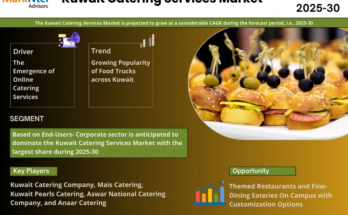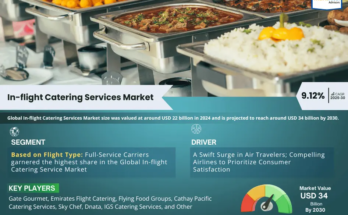Global Bio-Plastic Market Overview
The global bio-plastic market, valued at USD 8.2 billion in 2023, is anticipated to experience substantial growth, with an expected compound annual growth rate (CAGR) of 19.4%, reaching USD 28.4 billion by 2030. Bio-plastics, created from renewable biological sources like plant matter, waste, and microorganisms, offer a sustainable alternative to traditional petroleum-based plastics. These materials exhibit varying degrees of biodegradability, typically decomposing within eight to ten weeks under ideal conditions.
Bio-plastics are categorized into three main types: bio-based, partially bio-based, and non-bio-based, each offering distinct characteristics. Polylactic acid (PLA) and polyhydroxyalkanoates (PHA) are two of the most recognized types due to their mechanical strength, flexibility, and eco-friendliness. As industries increasingly shift toward sustainable practices, the bio-plastic market, particularly in packaging, shows immense promise. However, production technology challenges and global policy hurdles remain significant restraints.
Market Drivers
Environmental Awareness and Sustainability
One of the key factors driving the growth of the bio-plastic market is the rising consumer and corporate awareness of environmental issues. The desire for sustainable products, combined with stringent regulations imposed by governments worldwide, is encouraging the adoption of bio-plastics. For instance, the EU’s Single-Use Plastics Directive, introduced in 2021, bans several single-use plastic items, driving the demand for eco-friendly alternatives. Additionally, bio-plastics contribute to the reduction of carbon footprints by offering greener solutions compared to conventional plastics derived from fossil fuels.
For in-depth information on this study, visit the following link:https://www.stellarmr.com/report/req_sample/Bio-Plastic-Market-/1614
Shift in Packaging Industry
The growing demand for flexible and sustainable packaging has further fueled the bio-plastic market. Flexible packaging, particularly in the food industry, has seen a significant shift toward bio-plastics due to their adaptability and environmental benefits. Companies are opting for bio-plastics to meet consumer demand for eco-friendly packaging solutions, further driving the market.
Corporate Commitment to Sustainability
Large corporations like Coca-Cola, Nike, Nestle, and Ford are increasingly exploring the use of bio-plastics in their products and packaging. Coca-Cola, for example, introduced the “Plant Bottle,” which contains 30% plant-based plastic, showcasing the industry’s growing commitment to environmental sustainability. This corporate interest in bio-plastics is helping to expand the market, particularly as consumers become more environmentally conscious.
Market Challenges
Production Technology and Cost Constraints
One of the major barriers to the growth of the bio-plastic market is the high cost of production, primarily due to the complexity of manufacturing processes. The production of bio-plastics requires specialized equipment, precise conditions, and advanced technologies, leading to higher costs compared to traditional plastics. Moreover, bio-based raw materials are often more expensive, adding to the overall financial burden. As companies struggle to balance sustainability goals with economic viability, the adoption of bio-plastics may face hurdles.
Global Regulatory Complexity
While global efforts to promote sustainable alternatives are commendable, navigating the regulatory landscape can be a challenge for bio-plastic manufacturers. The need for compliance with varying international standards and regulations can slow down the market’s growth. Furthermore, despite growing environmental awareness, consumer knowledge about bio-plastics remains inconsistent, creating uncertainty and complicating efforts to expand the market.
Market Segmentation
By Type:
- Biodegradable Bio-Plastics: These are made from renewable resources and decompose naturally over time, making them ideal for applications in packaging, agriculture, and consumer goods. Biodegradable bio-plastics dominated the market in 2023 and are expected to continue leading the segment through 2030.
- Non-Biodegradable Bio-Plastics: While derived from renewable sources, these bio-plastics do not decompose naturally. They offer alternatives to traditional plastics in various industrial applications.
By Application:
- Flexible Packaging: This sector holds the largest market share, representing over 40% of the total bio-plastic market. As demand for environmentally friendly packaging solutions grows, bio-plastics are increasingly used in food wrappers, pouches, and other flexible packaging applications.
- Textiles: Bio-plastics are being used to create sustainable fabrics, contributing to the growing demand for eco-friendly textiles.
- Automotive & Transportation: Bio-plastics are being adopted in vehicle components, offering environmentally friendly solutions in the automotive sector.
- Agriculture & Horticulture: Bio-plastics play a vital role in promoting sustainable practices in agriculture, where they are used in applications such as mulch films and plant pots.
For in-depth information on this study, visit the following link:https://www.stellarmr.com/report/req_sample/Bio-Plastic-Market-/1614
Regional Insights
Europe: The European market leads the global bio-plastic market, accounting for over 40% of the market share in 2023. This dominance is driven by strong environmental policies and the region’s commitment to reducing plastic waste.
Asia-Pacific: Asia-Pacific is poised to be the fastest-growing region, driven by increasing environmental awareness and large-scale manufacturing capabilities. The region’s packaging industry, which constitutes about 45% of the global packaging market, is rapidly adopting bio-plastics. Countries like China, India, and Japan have implemented strict bans on single-use plastics, significantly boosting the consumption of bio-plastics in the region.
Competitive Landscape
Several key players are driving innovation in the bio-plastic market:
- Braskem
- Novamont SpA
- Teijin Limited
- Toray Industries
- Toyota Tsusho
- M&G Chemicals
- PTT Global Chemical Public Company
- Biopak
- Eco-Products, Inc
- Trellis Earth
- BioMass Packaging
Recent developments, such as Versalis’ acquisition of Novamont and NatureWorks’ new facility in Asia, reflect the industry’s expansion and investment in bio-plastic production. Furthermore, companies like Corbion and Biome Bioplastics are investing in research and development to stay ahead in the competitive market.
Conclusion
The global bio-plastic market is on a promising growth trajectory, driven by increasing environmental awareness, corporate sustainability initiatives, and regulatory support. While challenges related to production costs and regulatory complexities exist, innovations in manufacturing processes and rising demand for eco-friendly alternatives are expected to propel the market forward. With a forecasted CAGR of 19.4% from 2024 to 2030, the bio-plastic market is set to play a significant role in the global transition toward more sustainable materials.
To access more details regarding this research, visit the following webpage:https://www.stellarmr.com/report/Bio-Plastic-Market-/1614
More Trending Reports:
Asbestos Gloves Market https://www.stellarmr.com/report/Asbestos-Gloves-Market/674
Tissue paper market https://www.stellarmr.com/report/Tissue-paper-market/984
WI-FI Based Smart Locks Market https://www.stellarmr.com/report/WI-FI-Based-Smart-Locks-Market/1019
Convenience Food Market https://www.stellarmr.com/report/Convenience-Food-Market/1023
Potato Chips Market https://www.stellarmr.com/report/Potato-Chips-Market/1031
Key Offerings:
- Past Market Size and Competitive Landscape (2018 to 2022)
- Past Pricing and price curve by region (2018 to 2022)
- Market Size, Share, Size & Forecast by Different Segment | 2024-2030
- Market Dynamics – Growth Drivers, Restraints, Opportunities, and Key Trends by Region
- Market Segmentation – A detailed analysis by segment with their sub-segments and Region
- Competitive Landscape – Profiles of selected key players by region from a strategic perspective
- Competitive landscape – Market Leaders, Market Followers, Regional player
- Competitive benchmarking of key players by region
- PESTLE Analysis
- PORTER’s analysis
- Value chain and supply chain analysis
- Legal Aspects of Business by Region
- Lucrative business opportunities with SWOT analysis
- Recommendations
About Stellar Market Research:
Stellar Market Research is a multifaceted market research and consulting company with professionals from several industries. Some of the industries we cover include medical devices, pharmaceutical manufacturers, science and engineering, electronic components, industrial equipment, technology and communication, cars and automobiles, chemical products and substances, general merchandise, beverages, personal care, and automated systems. To mention a few, we provide market-verified industry estimations, technical trend analysis, crucial market research, strategic advice, competition analysis, production and demand analysis, and client impact studies.
Contact Stellar Market Research:
S.no.8, h.no. 4-8 Pl.7/4, Kothrud,
Pinnac Memories Fl. No. 3, Kothrud, Pune,
Pune, Maharashtra, 411029




